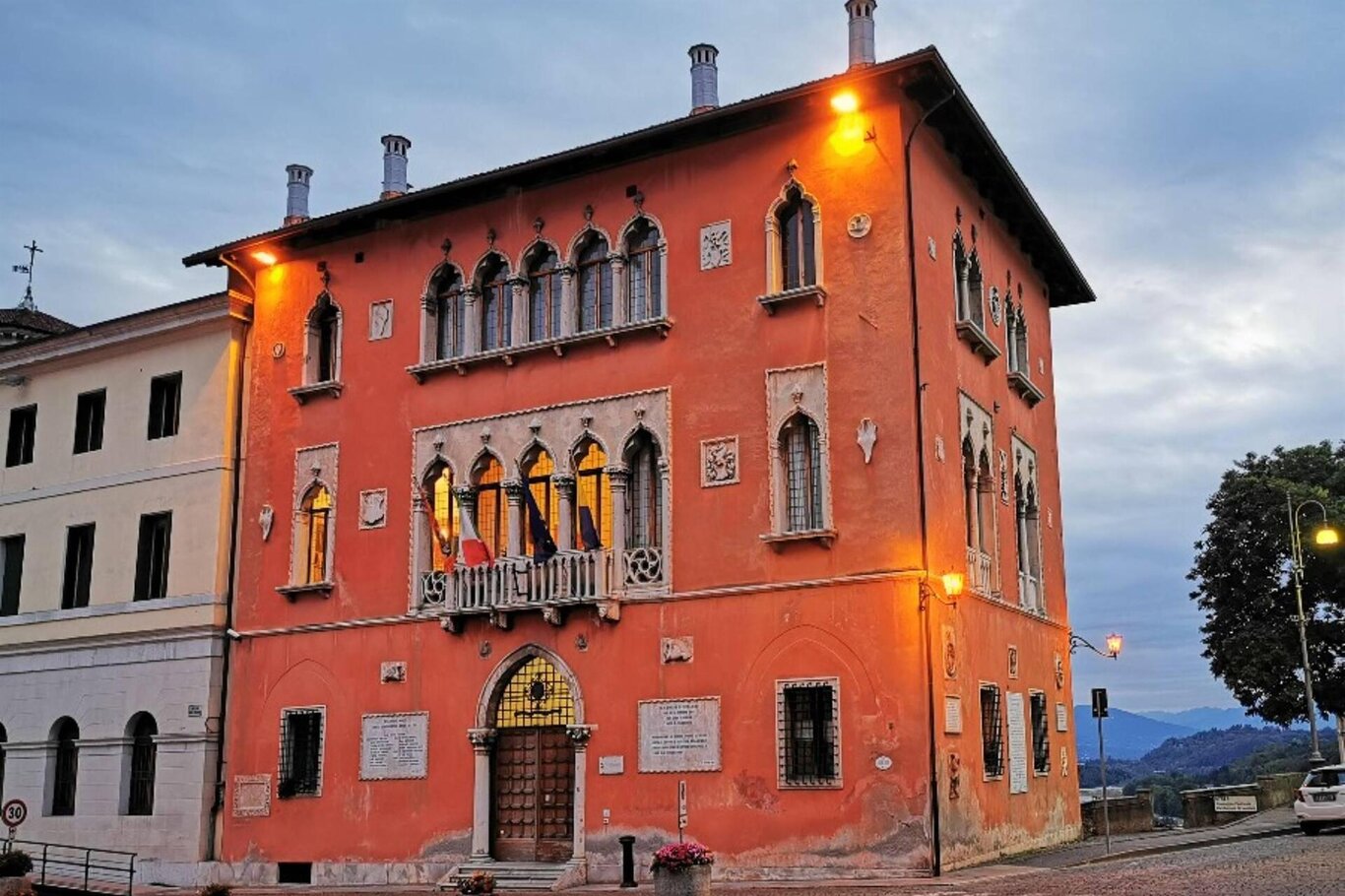The Municipality of Belluno – commonly known as the “Red Palace” due to its exterior color – was designed by architect Giuseppe Segusini (1801-1876) between 1834 and 1838, expanding the pre-existing 16th-century palazzo del Vicario, built in continuity with the 15th-century Caminata palace, the seat of the Community of Cividàl of Belluno, which still retains the sculptural ornamental elements recovered from the restructuring of the first half of the 19th century. Inside, in the council chamber, there is a series of neoclassical frescoes by Giovanni De Min (1786-1859), depicting the medieval deeds of the Belluno community, surrounded by portraits of illustrious figures from Belluno created by Pietro Paoletti (1801-1847).
Next to it is the former Tribunal Palace – now municipal headquarters – the result of the renovation carried out in the early 19th century, during the Lombardo-Veneto Kingdom, of the 15th-century seat of the Community of Cividàl of Belluno, to adapt it as the seat of the provincial tribunal.
The stone ornamental elements are largely reused on the facades of the nearby municipal headquarters “Red Palace,” while fragments of the frescoes that adorned it internally by Jacopo da Montagnana (1440/1443 –1499) and Pomponio Amalteo (1505-1588) are preserved in the Civic Museum of Belluno at Palazzo Fulcis.
The present building was realized in neogothical style in 1838 by the architect Giuseppe Segusini on the site of and with some architectural elements from the old Palazzo Comunale, called “La Caminada”. The old building was demolished because of the impossibility– at the time – to restructure it. According to local historicists the original building was erected from the XIII century and completely rebuild in 1476. It was decorated with coats of arms and busts of venetian rectors, which now decoratethe facade of the City Hall. Some of the busts now form a fillet around the Teatro Comunale.
Inside there used to be frescoes of Andrea Mantegna, Jacopo da Montagnana and Pomponio Amalteo (fragments in the Museo Civico). Today it is the site of the City Hall and the council chamber contains historic frescoes byGiovanni de Min (1786-1859) and a series of portraits by Antonio Tessari.
